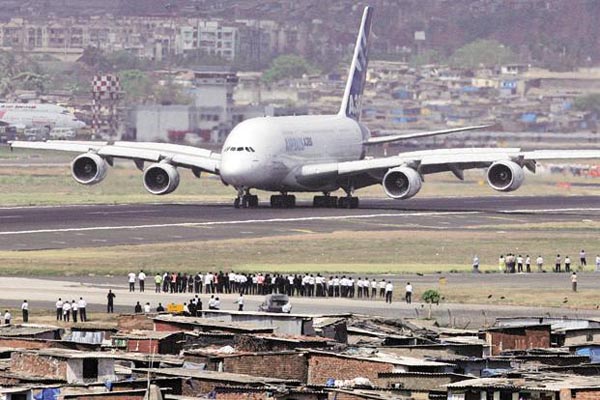
MUMBAI: In the first week of May, pilots and air traffic controllers at Mumbai airport will begin an experiment, the first of its kind in India, to make aircraft land on and take off from a single runway in much quicker succession. Under a carefully choreographed sequence, even as an aircraft would enter the runway to touch down, another would be lifting off at the other end.
To keep a runway thus occupied, the controller and the pilots involved will think ahead and plan their moves down to split-second precision. Once they become confident at the game, the airport will save 20 seconds per landing. That may not sound like a lot, but then again, the airport handles about 350 landings in 24 hours and the precious seconds saved during peak hours would eventually be registered by passengers.
“The new procedure will be launched on May 5. The Directorate General of Civil Aviation has instructed the procedure to be put on a trial basis for three months,” said an ATC official. If successful in Mumbai, the procedure may be replicated in other congested airports like Delhi and Bangalore. While Mumbai may be the first airport to carry out the trial in India, airports like London’s Heathrow and New York’s JFK, and the one in Newark have been following the practice for more than a decade. In the UK, it is called ‘land-after procedure’. In Mumbai, it is being called ‘landing clearance based on anticipated separation’.
The idea is to pack in more landings and takeoffs per hour, especially during the morning peak hours of 9-11.30am and evening peak hours of 5-8pm. That in turn would mean less time spent circling in the sky waiting to land, eventually resulting in a reduction in the quantum of delay.
In Mumbai, the 12,000-feet main runway, called 09-27, handles a major chunk of flight operations. The new procedure will be practiced only during day time and initially only on the main runway. Also, in the initial weeks, the procedure will be undertaken only for a few hours; as confidence builds, it will be spread out throughout the day, the ATC official said. The procedure would be a bit demanding for pilots, especially those who fly only on domestic routes, as it will involve a shift in perception.
To land an aircraft on a runway, a pilot has to get mandatory “landing clearance” from ATC. Currently, that comes in the form of three words: ‘Cleared to land’. Before this instruction is given to the pilot of a descending aircraft, the controller ensures that what lies ahead in front of the aircraft is a clear, unobstructed runway, waiting for the aircraft to touch down.
“Under the new procedure, though, when the landing instruction is given, the runway will be anything but clear of aircraft,” said a senior commander who has done such landings at Heathrow. For, even as an aircraft is rolling for takeoff, the controller would have given landing clearance to a descending aircraft. Or, there may be aircraft waiting in sequence to land and the second or third aircraft would have already received landing clearance. In short, it is left for the landing pilot to ensure that the aircraft that is taking off has lifted and has cleared the runway before the landing aircraft crosses the runway’s threshold to touch down. If that is not the case, the landing pilot has to do a go-around.
In short, it is left for the landing pilot to ensure that the aircraft that is taking off has lifted and has cleared the runway. In the end, the procedure is one of many that congested airports the world over are forced to follow. As aircraft in the sky increase, they need to be bunched tighter.


